Reviews
William A. Wellman
USA, 1951
Credits
Review by Cullen Gallagher
Posted on 03 August 2009
Source TCM Broadcast
Categories Women of the West
“Only two things in this world that scares me,” confesses Robert Taylor at the start of Westward the Women, “and a good woman is both of them!” As the veteran wagon guide Buck, he will have to confront both of his worst fears in a big way when he is hired by California territory settler Roy Whitman to lead 140 women from Chicago half-way across the country to his settlement, where a community of men are waiting eagerly for wives. This initial impetus for the story seemingly objectifies women to a social commodity — the men need wives to have children, and Whitman’s town relies on this cycle of life in order to prosper. But it is exactly this objectification that the narrative continually rejects and fights against throughout the movie. Much to Buck’s chagrin, his female “passengers” repeatedly transgress stringent gender binding, embracing this westward expansion as both a social and personal journey as well. For this band of women, Manifest Destiny is more than a geographical crusade — it’s about redefining oneself outside the strictures of society.
Masculine anxiety runs high throughout Westward the Women; none of the men know precisely what to do with them, how to act around them, or even where to find them. Whitman tells his men back in California, “They’ll be good women — make sure you’ll be good enough for them. Make sure you treat them with patience, understanding, honesty. They’ll be your fortune.” While his patronizing overtones are certainly dated, it seems partly intentional: there’s an inherent idolization of the “other” gender in his speech that is just as naïve as the men’s hyper hormonal urges. Essentially, it’s the mother/whore dichotomy — one man sees holiness, another sees sin, and both viewpoints say a heck of a lot more about the seer than the seen.
Buck’s first confrontation with his prejudice occurs at the initial meeting with “the women.” Having warned them of the hard, several thousand mile journey ahead of them, he inquires whether any of them know how to handle a gun. The mousey, bespectacled Maggie O’Malley stands up and easily catches the six-shooter thrown at her. Looking around the room for a suitable target, she picks a poster high up on the wall and shoots out the eyes of a man - clean through the pupil. Her shooting prowess will also later save Buck’s life, a sure sign that his delusions of superiority are both groundless and (at least in this case) potentially life threatening. It’s much better to have Maggie gunning for your side than against you, as the receiver of her lead found out the hard way.
Both sexes seem pretty clueless about the opposite gender, with the marked exception of the matronly widow Patience (a perfect name for this beacon of earthly knowledge). It’s no coincidence that Buck’s primary foil/love interest is the French dancer Fifi Danon — they are literally and figuratively speaking a different language, and her transition from saloon girl to Western pioneer embodies a sense of mobility that frightens Buck. Nothing expresses this gender divide more clearly than Buck’s repeated order for women and men to stay away from each other on punishment of death (a threat that he eventually must make good on). However, Westward the Women, never fully overcomes this puritanical bent — the entire narrative is aimed at the blessed union of husband and wife, as though it is the ultimate goal the characters’ lives, and both partners must be kept separate and pure until that ordained meeting. A character like Danon can escape her past, and widows like Patience and Mrs. Moroni can begin again — but these gestures of independence are all geared towards marriage.
For much of the movie, “the women” are referred to as something in quotes — a gender en masse instead of distinct identities. One scene, however, is all it takes to remove the quotes and humanize and individualize them. After an Indian raid, Buck has decided to give up and turn back, but the women refuse to concede. They must continue on to California. Taking in all the damage, Buck asks who has been killed in the battle. In what is perhaps a fortuitous error, the dialogue is rendered unmistakably artificial: voices echo and resound not like on a desert plain, but as though in a canyon. The death toll begins, each name accompanied by a shot of their fallen bodies: “Susan Brewster… Nora O’Brien… Dorothy Taylor… Helen Smith…” But this doubling - and even tripling - of voices resounds like a chorus. It gives significance to these names and the lives that went with them — lives lost in an attempt to start anew.
Westward the Women, is highly pragmatic. Many of the iconic Western set pieces that are often taken for granted - such as organizing a wagon train or marksmanship - are here explored in great detail. Director William “Wild Bill” Wellman devotes a great deal of screen time to the complexity of the physical labors necessary to make such an ambitious and demanding journey. The first half of the film offers insight into the labor-intensive minutiae of Western life back in 1851 with shots of everyone paring the wagon train, learning how to lead a team of horses or mules, and washing clothes in the river. In the second half, however, Wellman steps up the severity of the environment, beginning with the accidental death of Mrs. Moroni’s son while learning how to fire a rifle and moving on to horses trapped in alkali sand traps and wagons careening down mountains, crushing their drivers.
Perhaps the most affecting example of Wellman’s highly physical directing is the child birth sequence, in which all the women work together to lift the delivery wagon after it’s wheel has broken off. The entire birth occurs off-screen, all the while Wellman’s camera concentrates on the tense, sweating faces of the women — strained by the weight of the wagon, anxious to hear the first cries of a newborn baby. This collective image of strength, determination, and motherhood shows the complexity of what it meant — what it took — to be a real Woman of the West. There is no dichotomous divide between feminine and masculine arenas; women aren’t confined to the home, and men aren’t the sole arbiters of action. Patience, Danon, Maggie — these women don’t wait for the men to do the lifting, the shooting, the riding, and they sure as hell don’t let them do the birthing. Out West, you do what you need to survive. And having walked halfway across the country, they’ve proved that they’re more than any simple gender definition: they are survivors.
More Women of the West
-
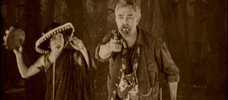
49-17
1917 -
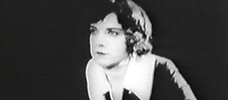
The Gun Woman
1918 -
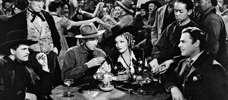
Destry Rides Again
1939 -
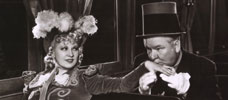
My Little Chickadee
1940 -
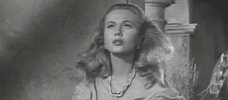
Colorado Territory
1949 -
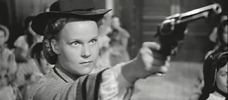
Westward the Women
1951 -
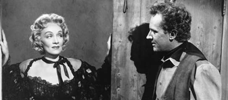
Rancho Notorious
1952 -
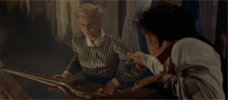
The Violent Men
1955 -
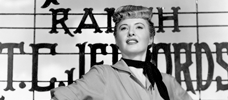
The Furies
1950 -
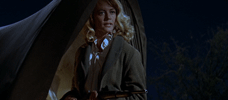
The Last Sunset
1961 -
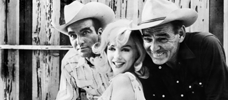
The Misfits
1961 -
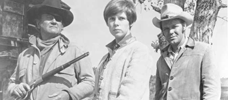
True Grit
1969 -
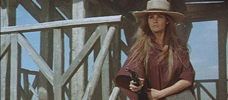
Hannie Caulder
1971 -
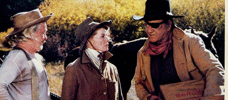
Rooster Cogburn
1975 -
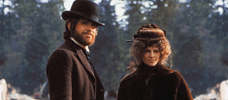
McCabe & Mrs. Miller
1971 -
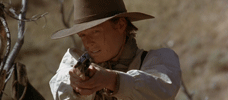
The Ballad of Little Jo
1993 -
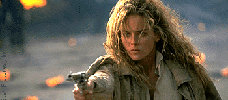
The Quick and the Dead
1995 -
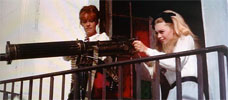
Viva Maria!
1965 -
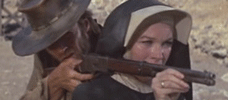
Two Mules for Sister Sara
1970
We don’t do comments anymore, but you may contact us here or find us on Twitter or Facebook.



